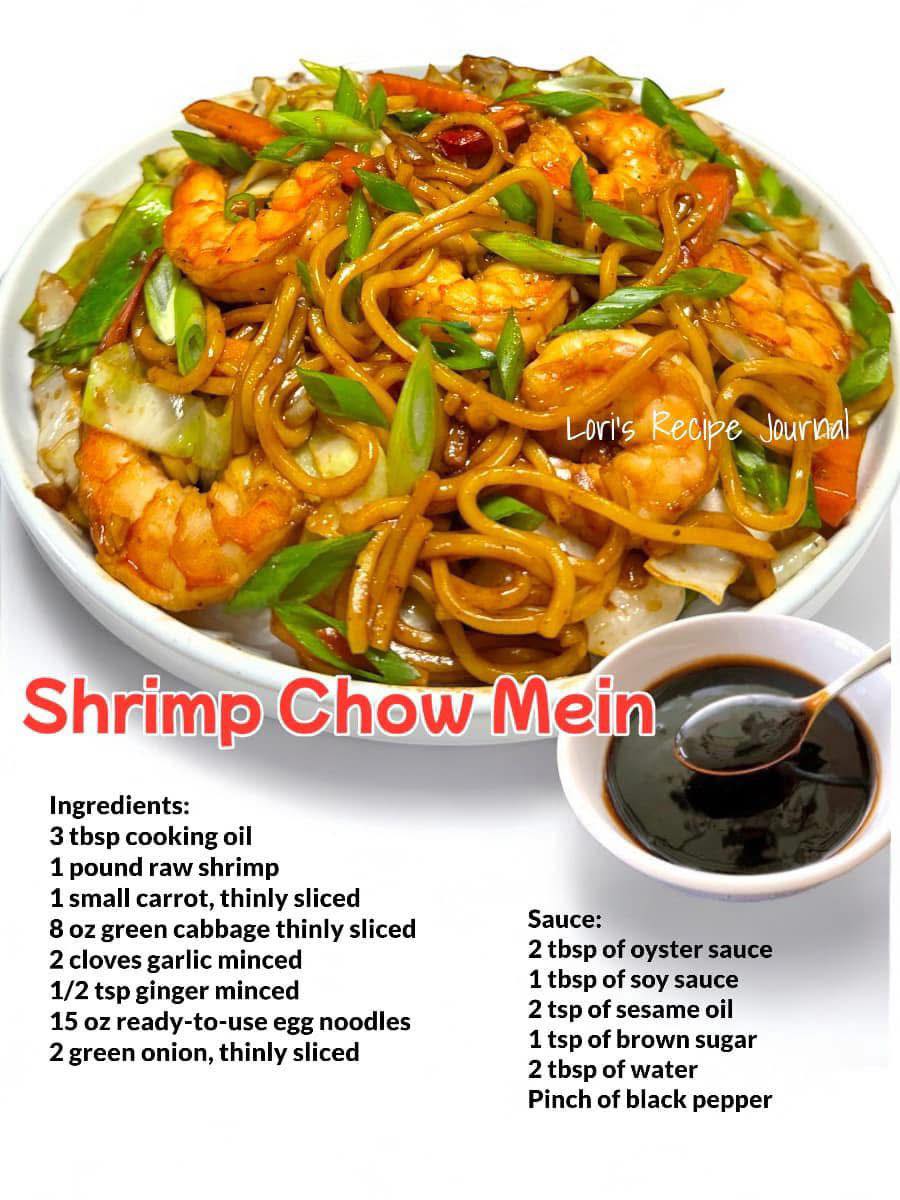Introduction
Shrimp Chow Mein, a beloved classic of Chinese-American cuisine, is a stir-fried noodle dish packed with succulent shrimp, crisp vegetables, and a savory sauce. It’s a quick, easy, and satisfying meal perfect for weeknights or a crowd-pleasing dish for gatherings. This article will guide you through everything you need to know to make the best Shrimp Chow Mein at home, covering ingredients, cooking techniques, and helpful tips for success.
Main Sections
Understanding Chow Mein: Noodles and Preparation
The key to great Chow Mein lies in the noodles. Here’s what you need to know:
- Types of Noodles: Fresh egg noodles are traditionally used. Dried egg noodles are a good substitute, but require pre-cooking according to package directions. Look for noodles specifically labeled “Chow Mein” noodles if possible.
- Preparing the Noodles: Cook fresh noodles until al dente, then rinse them in cold water to stop the cooking process and prevent them from sticking together. This step is crucial for achieving the right texture. Dried noodles should be cooked according to package instructions, usually boiling until tender.
- Noodle Texture: The perfect Chow Mein noodle should be slightly chewy and not mushy. Overcooked noodles will result in a soggy dish.
Selecting the Shrimp: Fresh vs. Frozen
Choosing the right shrimp can significantly impact the flavor and texture of your Chow Mein.
- Fresh Shrimp: Offers the best flavor but requires more preparation. Devein and shell the shrimp before cooking.
- Frozen Shrimp: A convenient option. Thaw completely before using. Choose shrimp that has been peeled and deveined to save time.
- Shrimp Size: Medium or large shrimp (31-40 count per pound or 26-30 count per pound) are ideal for Chow Mein. Avoid using very small shrimp, as they can overcook easily.
- Shrimp Preparation: Pat the shrimp dry before stir-frying to ensure a good sear. A light marinade with soy sauce, ginger, and garlic enhances the flavor.
The Vegetable Medley: Achieving the Perfect Crunch
A variety of vegetables adds texture and nutrition to Shrimp Chow Mein.
- Classic Vegetables: Cabbage (napa or green), carrots, celery, and bean sprouts are staples in Chow Mein.
- Optional Additions: Bell peppers (red, green, or yellow), mushrooms, snow peas, and water chestnuts can also be added.
- Vegetable Preparation: Cut vegetables into uniform sizes for even cooking. Stir-fry them quickly over high heat to maintain their crispness. Don’t overcook the vegetables! They should be slightly tender-crisp.
Crafting the Savory Sauce
The sauce is what ties everything together. A well-balanced sauce is key to a delicious Chow Mein.
- Base Ingredients: Soy sauce, oyster sauce (optional), sesame oil, chicken broth (or vegetable broth), cornstarch, and sugar form the base of the sauce.
- Adding Flavor: Ginger, garlic, and white pepper enhance the savory notes of the sauce.
- Adjusting the Sauce: Taste and adjust the sauce to your liking. Add more soy sauce for saltiness, sugar for sweetness, or white pepper for a subtle kick.
- Thickening the Sauce: Cornstarch slurry (cornstarch mixed with water) is used to thicken the sauce. Add it gradually until the desired consistency is reached.
Stir-Frying Techniques for Success
Stir-frying is the heart of Chow Mein. Here’s how to master it:
- High Heat: Use high heat to quickly cook the ingredients and create a wok hei (a smoky flavor).
- Wok or Large Skillet: A wok is ideal, but a large skillet will also work.
- Cooking Order: Stir-fry the shrimp first until cooked through. Remove from the wok and set aside. Next, stir-fry the vegetables until slightly tender-crisp. Add the cooked shrimp back to the wok.
- Combining Ingredients: Add the cooked noodles and sauce to the wok. Toss everything together until well combined and the noodles are coated in the sauce.
- Serving Immediately: Serve the Shrimp Chow Mein immediately for the best flavor and texture.
Conclusion
Making Shrimp Chow Mein at home is easier than you think! By following these tips and techniques, you can create a restaurant-quality dish that’s sure to impress. Experiment with different vegetables and adjust the sauce to your taste preferences. Enjoy the process and savor the delicious results. Happy cooking!
